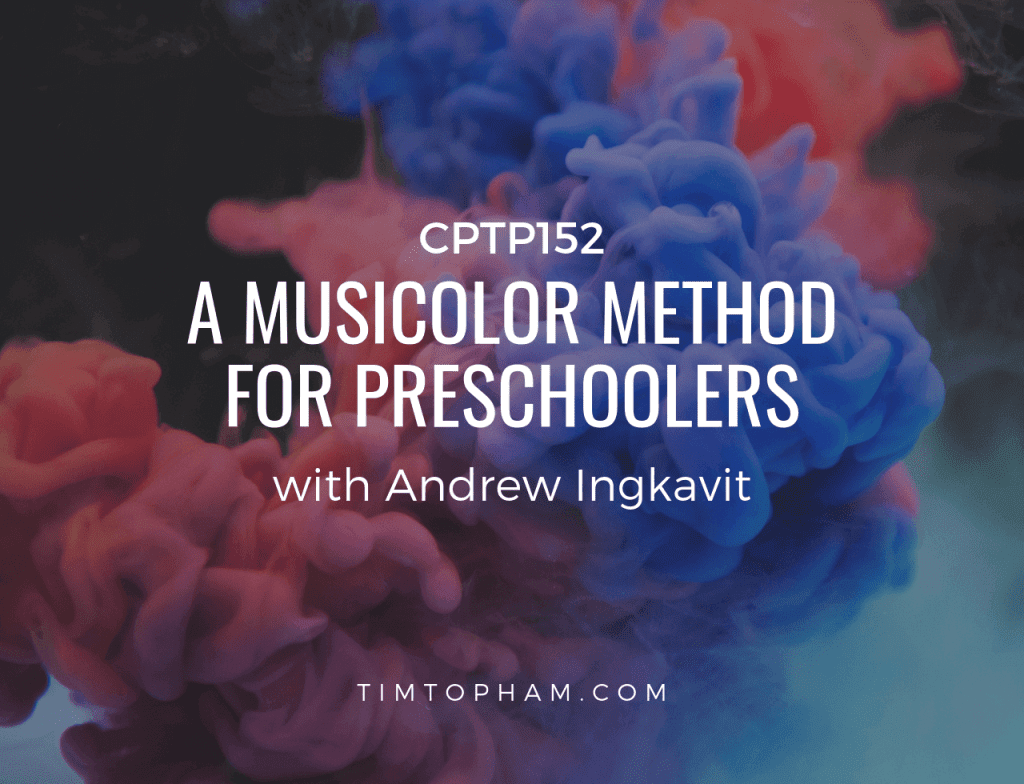
When Andrew Ingkavit’s son wanted to learn piano at age 3, no teacher was willing to take him. This started him on his quest to find a way to teach his son and eventually lead to the creation of the Musicolor method for preschoolers and other beginners.

Listen in to learn how Andrew integrates colours into his method, how it is sequenced and his philosophy on music teaching.
If you’d like to download a PDF transcript of this episode, please click below.
[thrive_leads id=’134034′]
My Music Staff is studio management made easy – our web-based software helps you manage the core aspects of your private music teaching business. Whether you are a single teacher or part of a multi-teacher studio team, our affordable software is a perfect fit and designed to help your business achieve success.
My Music Staff can do everything your private music studio needs. It helps you centrally manage your website, student contact information, schedule, invoicing and more.
Visit our website (www.mymusicstaff.com) to start your FREE 30-day trial today and experience all of the features that My Music Staff has to offer. No credit card is required to start your trial and there is no obligation to subscribe.
As a valued podcast listener, you’re eligible for a $100 discount on an annual Inner Circle Membership. This discount lasts for as long as you’re a member and whatever price you sign up for today is the price you’ll pay as long as you remain a member. Copy this coupon code to use when you see the “Coupon Code” box: PIANOPODCAST.
There are a lot of podcasts you could be tuning into today, and I’m grateful that you’ve chosen mine. Whether you’re at the gym, on the bike or in the car, I know that you and your students will get lots out of what you learn in the long run. Just make sure you try out some of the ideas before they get lost in the business of your next lessons! If you enjoyed today’s show, please share it by using the social media buttons on the left of the page. Also, kindly consider taking the 60-seconds it takes to leave an honest review and rating for the podcast on iTunes or on my Facebook page. Reviews are extremely helpful when it comes to show’s ranking and you can bet that I read every single one of them personally. Lastly, don’t forget to subscribe to the podcast on iTunes, to get automatic updates every time a new episode goes live.
Did you agree with any particular part of Andrew’s teaching philosophies? We’d love to hear your thoughts in the comments. 🙂

Carol K says:
Enjoyed the interview, Tim. I think you were able to bring out what needed to be said about the method.
Markus Kreischer says:
Thanks Tim and Andrew for this interesting podcast and thank you Tim for mentioning my piano method.
As to reading vertically I have the same experience as Andrew. It’s easier for beginner students to understand and it’s really no problem for them to adapt when the sheet is rotated by 90 degrees so that they have to read in the regular (horizontal) reading direction.
As professional musicians we are used to read horizontally. Therefor we experience reading from top to bottom (vertically) as awkward. Not all teachers are aware of that now and then it is crucial to differentiate between what is natural for themselves and what are the needs of a student. We do that all the time. Just one example: Young students are taught about steps and skips but of course professionals think seconds and thirds. Wouldn’t it be extremely awkward to discuss a melodic contour with a colleague and use step an skip instead of the professional terms?
My method (PianoSeesaw.com) is designed for students at the ages 7-10. I tried it though with my 5 year old daughter some years ago. She just understood intuitively the simplified notation (which transforms during the method step by step into the regular notation). And here’s my point: If reading can be done intuitively, the teacher doesn’t need to use much time on teaching it and has therefore more time to focus on other things like playing by ear, musicality, keyboard awareness, technique and so on.
University of Tromsø, Norway
Andrew Ingkavet says:
Thanks so much for a wonderful interview Tim. Great questions. That was so fun! I hope to come down under one day and meet you. Cheers from Brooklyn!